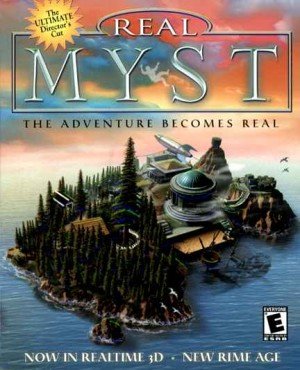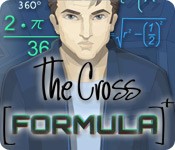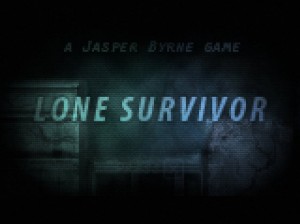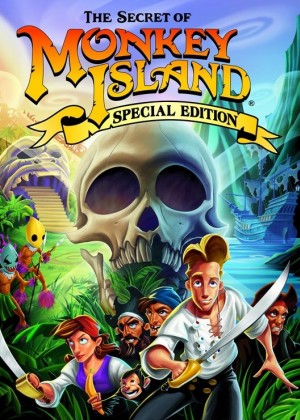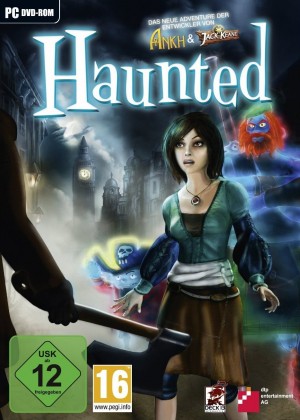realMyst flashback review - page 2

Note: This review is based on the original version of realMyst. An enhanced Masterpiece Edition has since been released and reviewed separately.
There are roughly two types of adventure gamers: those who like Myst and those who loathe it. Myst was the first legitimate breakout success of the computer game era, becoming a mainstream institution despite the widespread criticism that it was little more than a marginally-interactive slideshow. By the end of its run (“end” being a somewhat loose term, as it continues to be ported to every gaming platform in existence), it had been both heralded as champion of the CD-ROM format and eventually bemoaned as sounder of the death knell of adventure games. As with anything commercially successful, it naturally gave birth to a glut of me-too adventures of mostly dubious quality, and whatever mainstream accessibility or charms it possessed were never inherited by any of its bastard offspring.
Personally, I never understood the popular appeal, and of the six-million copies sold, I always assumed that five were bought based on simple zeitgeist-inspired curiosity and/or given to kids by their parents or grandparents who heard something about it on Good Morning, America, who then spent a half-hour or so puttering around Myst island proper, said something along the lines of “is that it?” or “what am I supposed to do now?” and moved on to something else. But even though the mainstream has since moved on, the legacy of Myst has left a much more profound impact on the evolution of adventure games, having given birth to the “first-person explorer” style of adventures, which is often a rather polarizing experience for most gamers.
So far as I can remember, I first came across Myst in a magazine advertisement (back in the days when things of that nature were primarily conveyed through printed media). I don’t recall much about the ad, other than it had some very pretty pictures of rocks and trees and maybe a lighthouse, and vaguely promised something or other about exploration or a journey or an experience or something like that. I was intrigued, if for no other reason than it looked unlike any other game I had seen and conveyed an intangible sense of wonderment, which – having lived a relatively sheltered existence to that point – was a relatively low bar.
At any rate, I bought the game without knowing anything more about it. I wasn’t even completely certain that it was an adventure game, as it never explicitly stated as much. Of course, at the time, computer games were basically either adventures or RPGs and it certainly didn’t look like an RPG and it came on CD-ROM, which was the sole province of adventure games (and “multimedia” encyclopedias), so I considered it a reasonably safe bet.
It didn’t disappoint, in that it was certainly like nothing I had played before. Probably like a great many people who played it, I was a bit put off at first, if for no other reason than I was somewhat offended that it steadfastly refused to tell me what the hell I was supposed to do (and it didn’t appear to have an inventory, which was pure blasphemy). I was quite used to my adventures at least telling me what manner of looming menace I was supposed to save the kingdom, earth, universe, etc. from and setting me about my business. Instead, all I got was some meaningless drivel and a book falling through space before being dropped on an island and left to my own devices. After about a half-hour or so puttering around Myst island proper, saying something along the lines of “is that it?” and “what am I supposed to do now?”, I moved on to something else.
Fortunately, I’m not quite so easily discouraged (or at least I wasn’t, at the time), and I eventually came back to have another go at it. Except this time I actually bothered to read the journals and study the machines on the island, and once I let go of my adventure game prejudices and embraced the idea that the actual point of the game was to sort out what to do and piece together the story, I was quite hooked. Of course, if I were to describe that very same premise today, it would sound like a total cliché, but as with most clichés, the very first time someone did it, it was actually a hell of a thing.
The story was fantastical, yet relatively simple and relatable (part of the charm that was lost in the sequels), which made it compelling and probably contributed to its mainstream success. More importantly, the puzzles were (mostly) based on some type of real-world or intuitive logic and their mechanical underpinnings and the way I interacted with them (pushing a button or physically pulling a lever) made them feel accessible, so I felt I could eventually “solve” them by simply thinking about them rationally as opposed to resorting to the traditional last-resort “try everything on everything” tactic.
However, the game's biggest draw was arguably the graphics. Adventure games, to that point, were mainly styled in the vein of the Sierra or LucasArts aesthetic, being of the animated pixel-art variety. Even among CD-ROM games, most adventures were basically just a straight port of the disk version with voiceovers added. A game consisting entirely of high-resolution (at the time) pre-rendered 3D graphics was practically unheard of (for purposes of dramatic license, I’m ignoring the existence of The 7th Guest). For everything else that I’ve praised it for, I would be lying if I said that one of the major factors in my purchasing decision wasn’t the sensational pictures that the advertisement promised me were actual gameplay screenshots. As much as I would like to take the high road and say that I’m above all that, I am, after all, only human and I like pretty things.
Of course, up to now, I’ve been talking about Myst, when I’m actually reviewing realMyst. So what about this version? Well, realMyst is essentially classic Myst transplanted into a real-time 3D engine. When it was released, realMyst was billed as the version of the game that the creators (Rand and Robyn Miller) would have originally made had the technology been available at the time. Naturally, Robyn later went on record to explicitly deny that it was how they had originally envisioned Myst and that it was basically a pointless remake. Nonetheless, whether realMyst was conceived as a cynical cash-in or the result of some late-night drunken tryst between Myst and a UDK (it’s not actually done in any version of the Unreal engine), despite Robyn’s disapproval, it is (more or less) the game I had pictured when I was playing the original Myst.
The biggest, and really the only, difference between the two versions is that realMyst is rendered in a real-time 3D engine, as opposed to the original pre-rendered “slideshow”. With no more clicking your way from slide-to-slide, navigation is handled via FPS-style controls, meaning the mouse is used to look about, while you can move yourself using either the mouse (forward and backward by holding down the left or right mouse button, respectively) or the traditional keyboard WASD controls (although there’s actually no strafing, which is mildly annoying). Although it seems like a completely superficial distinction between the versions, I felt that being able to actually navigate the Ages of my own accord gave them a sense of place that the original game and its limited or forced perspective couldn’t quite live up to. Particularly as a game that begs exploration, even in its limited scope, the freedom of movement feels absolutely appropriate here. I could finally wander through the trees on my way to the log cabin or wander past the planetarium and see what was on the other side of the library (there was nothing). Of course, that freedom is still relatively contained; you can’t go off-script, as there are plenty of invisible walls to keep you from screwing about too much (the first thing I did was to try jumping into the water, but the game was having none of that). The downside of this newfound freedom is that it can make gameplay a bit ponderous in certain sections, as puzzles that require backtracking require you to physically traverse the terrain, as opposed to a few clicks – particularly if you’re intent on collecting all of the blue and red pages.
For a 3D adventure game, no less one created in a proprietary engine, the graphics were relatively advanced for the time (actually better than a number of its FPS peers). The rippling water (or what passed for ripples at the time), weather effects (rain), day and night cycles, and occasional tree or other odds-and-ends swaying in the wind made everything feel much more alive (relatively speaking; Myst still wasn’t exactly a happening place). And surprisingly, thirteen years later, the graphics actually hold up quite well. Of course, the models are all relatively simple, consisting mostly of rocks, trees and uncomplicated architectural structures, and are surprisingly faithful to the original game, without feeling too basic. Whether by design or coincidence, this actually gives them somewhat of a timeless or nostalgic feel today. It also helps that they didn’t bother converting any of the characters into low-poly 3D models, which is usually the first thing to give away an aging graphics engine (Atrus is mercifully still portrayed via a video overlay, which has been upgraded to a high-res version).
Graphics and controls aside, the only actual gameplay addition is an additional Age, called the Rime Age, which becomes accessible once the game proper is completed. This isn’t a fully-developed Age by any means, and probably won’t add more than 15 minutes or so of actual game time. Its purpose seems to be to provide a bit more of a bridge to Riven than the original game, and retroactively ties the game more closely into the series’ increasingly impenetrable mythology, which I gave up on after around the second or third of the five-hundred-odd journals in Uru.
Otherwise, if you’ve played Myst, then everything is more or less as you remember. Switches are still flipped and buttons pushed using the same disembodied orange hand, Sirrus's and Achenar’s toys are still accounted for, the rocket-minecart-thing maze in the Selenitic Age is still annoying as all hell, and Atrus still flippantly dismisses you at the end (after saying he’ll need another favor from you) without bothering to tell you the game is actually over (prompting me to imply that his mother was a woman of ill repute several times on my first play-through).
Given all that, it could certainly be argued that its existence is superfluous, but there are a great many other things in this world that have been pointlessly remade, and not nearly as competently (Total Recall comes to mind). In case I haven’t explicitly mentioned which camp I fall into, I like Myst, and when I feel like replaying Myst, I play realMyst. Unless you have a distinct aversion to the first-person 3D interface or you’re the type of militant “point-and-click” adventure gamer purist that won’t stand for getting peanut butter in your chocolate, then I consider this the definitive version of the original game. And if you’re of the minority that, for whatever reason, has never played it in any format, then I think this a fine opportunity to find out which side of the Myst love-hate debate you fall on.




